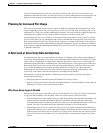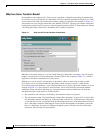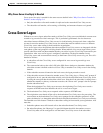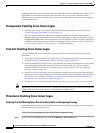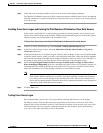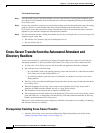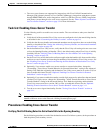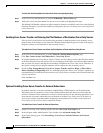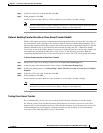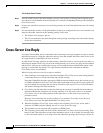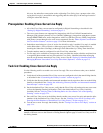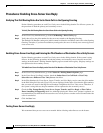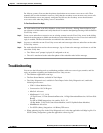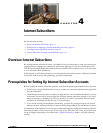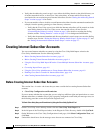
3-11
Networking Guide for Cisco Unity Release 5.x (With Microsoft Exchange)
OL-13844-01
Chapter 3 Cross-Server Logon, Transfers, and Live Reply
Cross-Server Transfer from the Automated Attendant and Directory Handlers
Step 4 In the New Value list, click 0, and then click Set.
Step 5 When prompted, click OK.
You do not need to restart the Cisco Unity software or server when you make a change.
Note For Cisco Unity failover, registry changes on one Cisco Unity server must be made manually on
the other Cisco Unity server, because registry changes are not replicated.
Optional: Enabling Transfer Override on Cross-Server Transfer Handoff
When a caller enters an extension in the automated attendant followed by the digits “#2,” the caller will
be routed directly to the greeting for the extension entered without a transfer being attempted. This is
known as the transfer override digit sequence. By default, the transfer override digit sequence is ignored
when the subscriber who is associated with the extension preceding the “#2” is homed on another
Cisco
Unity server in the dialing domain. If you want to enable the transfer override digit sequence for
subscribers who are homed on other Cisco
Unity servers, do the following procedure. Both the
originating and destination Cisco
Unity servers must be at version 5.0(1) or later to enable this feature.
To Enable Transfer Override on Cross-Server Transfers
Step 1 On the Cisco Unity server desktop, double-click the Cisco Unity Tools Depot icon.
Step 2 In the left pane, under Administrative Tools, double-click Advanced Settings Tool.
Step 3 In the Unity Settings pane, click Networking—Allow Transfer Override on Cross-Server Transfer
Handoff.
Step 4 In the New Value list, click 1, and then click Set.
Step 5 When prompted, click OK.
You do not need to restart the Cisco Unity software or server when you make a change.
Note For Cisco Unity failover, registry changes on one Cisco Unity server must be made manually on
the other Cisco Unity server, because registry changes are not replicated.
Testing Cross-Server Transfer
We recommend that you test cross-server transfer before allowing subscribers to use the feature.
For failover systems, first test that the primary destination servers answer cross-server calls. Then
manually fail over the destination servers to verify that the secondary server answers cross-server calls.
If the destination servers are properly configured for failover, the secondary server should answer
cross-server calls when the primary server is unavailable.



